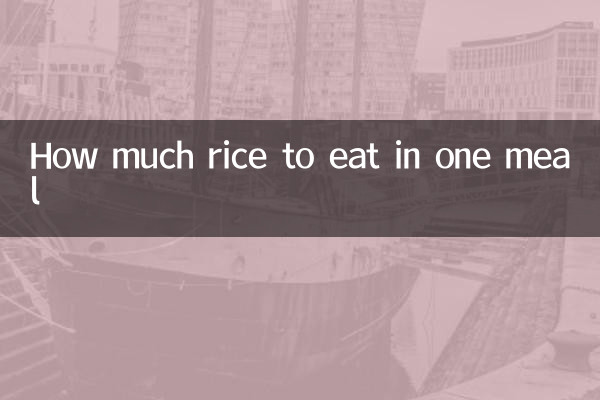How much rice should I eat in one meal? Scientific suggestions and analysis of popular topics
In the past 10 days, the discussions on healthy diet, weight loss and carbohydrate intake have remained high on the Internet. Especially the topic of "how much rice to eat in one meal" has caused widespread controversy. This article combines the latest hot topics and scientific data to provide you with structured analysis and practical suggestions.
1. Review of popular topics across the Internet (next to 10 days)

Here are the recent hot topics and data related to "rice intake":
| Hot Topics | Discussion Hot Index | Main controversy points |
|---|---|---|
| "Do you want to eat rice if you lose weight?" | 85,000 | Low Carb vs Balanced Diet |
| "How much rice can you eat in one meal to be healthy" | 72,000 | Scientific intake vs personal habits |
| “The relationship between rice and blood sugar” | 68,000 | Glycemic index and health risks |
| "Rice amount in celebrity weight loss recipes" | 55,000 | The feasibility of extreme diets |
2. How much rice should I eat in one meal? Scientific advice
According to the recommendations of the Chinese Nutrition Society and the World Health Organization (WHO), the daily carbohydrate intake of adults should account for 50%-65% of the total energy. Take a bowl of rice (about 150 grams cooked) as an example, the calories are about 200 calories. Here are the recommended intakes for different groups:
| crowd | Recommended amount of rice per meal (heavy cooked) | Total daily carbohydrate proportion |
|---|---|---|
| Ordinary adults | 100-150g | 50%-65% |
| People who lose weight | 50-100g | 40%-50% |
| Diabetic patients | 50-80g | 45%-55% |
| High-intensity exercisers | 150-200g | 55%-65% |
3. Analysis of the focus of netizens’ controversy
1."Can you eat rice if you lose weight?": Low-carb diet proponents believe that reducing rice intake can speed up fat burning, but nutritionists point out that long-term low carbs may lead to metabolic disorders. Weight loss people are advised to choose low-GI rice (such as brown rice) and control a single intake.
2.“The relationship between rice and blood sugar”: The GI value of white rice is high (about 73), but it can reduce the rate of sugar increase with vegetables and protein. A recent study showed that replacing hot rice with cold rice can reduce GI value by 20%.
3."Misleading from celebrity extreme recipes": A celebrity’s public recipe for “eat only 50 grams of rice a day” triggered a wave of imitation, but doctors warn that such extreme diets could lead to malnutrition and rebound.
4. Practical suggestions
1.Quantitative intake: Use a standard bowl (12cm in diameter) to serve rice, and 1 bowl (about 150 grams) for ordinary adults.
2.Matching skills: Mix rice with mixed grains (such as oats and quinoa) at 1:1 to improve satiety and nutritional density.
3.Special group of people: Diabetic patients can choose to have cold overnight rice, which has a higher resistant starch content.
Summarize: Rice intake needs to vary from person to person, and the combination of scientific suggestions and personal needs is the way to health. Recent hot topics reflect the public's ambivalence about carbohydrates, but a balanced diet remains the basis for long-term health.

check the details

check the details